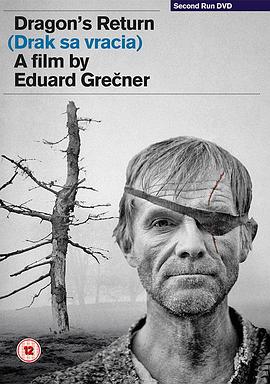йҰ–йЎө В» еҫ·жӢүе…Ӣзҡ„еӣһеҪ’ В» еҫ·жӢүе…Ӣзҡ„еӣһеҪ’
еҫ·жӢүе…Ӣзҡ„еӣһеҪ’

еҫ·жӢүе…Ӣзҡ„еӣһеҪ’
- дё»жј”пјҡ
- жӢүеӨҡдёҮВ·еҚўеҚЎеӨ«ж–Ҝеҹә еҸӨж–ҜеЎ”еӨ«В·з“ҰжӢүиө« иүҫзұідёҪеЁ…В·з“ҰиҗЁзәҰеЁғ еЁҒе»үВ·жіўжҙӣе°ј Jela Buckova Jozef Cierny Pavel Chrobak зұіеә“жӢүж–ҜВ·жҙӣиҝӘжҙҘж–ҜеҮҜ Ivan Macho JГЎn Mildner Andrej Mojzis Jan Pelech еҚўеӨҡз»ҙзү№В·иө–зү№е°” ж–Ҝзү№еҮЎВ·е…Ӣз»ҙеӯЈе…Ӣ Milan Mach
- еӨҮжіЁпјҡ
- HDдёӯеӯ—
- зұ»еһӢпјҡ
- еү§жғ…
- еҜјжј”пјҡ
- зҲұеҫ·еҚҺВ·ж јиҺұзәі
- еҲ«еҗҚпјҡ
- Dragon Returns
- жӣҙж–°пјҡ
- 25-03-26/е№ҙд»Јпјҡ1968
- ең°еҢәпјҡ
- е…¶е®ғ
wjm3u8ж’ӯж”ҫеҷЁжҷҡй«ҳеі°жңҹеҸҜиғҪеҚЎйЎҝиҜ·иҖҗеҝғзӯүеҫ…зј“еӯҳдёҖдјҡи§ӮзңӢпјҒ
зӣёе…іи§Ҷйў‘
- 1.ж—әи§’зӣ‘зӢұзІӨиҜӯHD
- 2.жҲҳзӢјдј иҜҙзІӨиҜӯHD
- 3.еҒ·жҲ‘з ”еҸ‘жҲҗжһңеҗҺжҲ‘йңҮжғҠдё–з•Ңе…ЁйӣҶ
- 4.ж—ҘиҗҪж—ҘеҮә2024HD
- 5.з©ҝеҲ°е…«йӣ¶е®¶еұһйҷўиҖҒе…¬еҸҲзәўжё©е•Ұе…Ё85йӣҶ
- 6.еҚҝеҚҝйЎҫжҲ‘е…Ё70йӣҶ
- 7.4жңҲ7ж—Ҙ 23-24иөӣеӯЈж„Ҹ甲第31иҪ® жҒ©жіўеҲ©VSйғҪзҒөHD
- 8.з»ҲжһҒеӨҚд»ҮиҖ…2пјҡй»‘иұ№зҡ„еҙӣиө·HD
- 9.жҚ•зӢјдәәз”ҹHD
- 10.й“ҒзҢҙеӯҗдј еҘҮд№ӢиҠұеҪұеҚұжңәHD
- 11.й»‘иЎЈеҘідәә2пјҡжӯ»дәЎеӨ©дҪҝHD
- 12.жҲ‘е’ҢжҲ‘зҡ„иөӣиҪҰиҖҒзҲёHD
- 13.з”ҹжӯ»28е°Ҹж—¶HD
- 14.йЈһйҫҷеҶҚз”ҹзІӨиҜӯHD
- 15.е’ұ家全54йӣҶ
- 16.еҰ“еҘізҡ„иҚЈиҖҖHDдёӯеӯ—
- 17.зү№еҲ«жңүз§Қпјҡзү№иӯҰдҪҝе‘ҪHD
- 18.зӯ”еҚ·вҖ”вҖ”жҸҙй„ӮеҢ»з–—йҳҹе‘ҳжҠ—з–«и®ҝи°ҲеҪ•HDдёӯеӯ—
- 19.зҝ жҳҹд№ӢеҠ е°”еҲҡи’Ӯдәҡе·Іе®Ңз»“
- 20.11жңҲ9ж—Ҙ 23-24иөӣеӯЈNBA常规иөӣ 马еҲәVSе°је…Ӣж–ҜHD
гҖҠеҫ·жӢүе…Ӣзҡ„еӣһеҪ’гҖӢеҶ…е®№з®Җд»Ӣ
дёҺStefan Uherе’ҢElo HavattaдёҖж ·пјҢEduard Grecnerд№ҹжҳҜ60е№ҙ(рҹҳ§)д»Ј(рҹҺҫ)ж–Ҝ(sД« )жҙӣдјҗе…Ӣж–°(xД«n )(рҹҺІ)жөӘжҪ®з”өеҪұ(рҹҸҮ)зҡ„зј”йҖ иҖ…д№ӢдёҖгҖӮд»–зҡ„дёүйғЁеҪұзүҮгҖҠдёҖ(yД« )е‘Ёдёғ(рҹ•Ҝ)еӨ©гҖӢпјҲ1964пјү(рҹҡү)гҖҠе°јз»’(рҹҗ–)жңҲдә®гҖӢпјҲ1965пјүе’Ң(hГ© )иҝҷйғЁ(bГ№ )гҖҠеҫіжӢүе…Ӣ(рҹҗ¶)зҡ„еӣһеҪ’гҖӢйғҪжҳҜж–Ҝжҙӣдјҗе…Ӣж–°жөӘжҪ®(рҹ§ҡ)з”өеҪұзҡ„д»Ј(рҹҢҡ)иЎЁ(biЗҺo )(рҹ“Ҝ)дҪң(рҹҡЁ)гҖӮиҝҷйғЁеҸҷ(xГ№ )дәӢ(shГ¬ )ж–№жі•(fЗҺ )зӢ¬зү№еёҰ(рҹҺӣ)жңү(рҹҢҠ)жҳҺжҳҫж„ҸиҜҶжөҒ(liГә )йЈҺж јзҡ„й»‘зҷҪеҪұ(yЗҗng )(рҹҸӮ)зүҮз”ҡ(shГЁn )иҮій—ҙжҺҘеҪұе“ҚеҲ°дәҶ(le )еҗҺ(рҹ’Ә)жқҘжі•еӣҪеҜј(dЗҺo )(рҹҲҙ)жј”(yЗҺn )ж ј(вӣҸ)йҮҢиҖ¶еңЁ(zГ i )жҚ·е…ӢжӢҚж‘„зҡ„дёӨйғЁеҪұзүҮгҖҠиҜҙ(shuЕҚ )и°Һзҡ„дәә(рҹҘ•)гҖӢе’ҢгҖҠEden and AfterгҖӢгҖӮгҖҖгҖҖA special place in the development of feature films is reserved for Eduard Grecner, the creator of just one good film, Dragon Returns (Drak sa vracia, 1967), titled after the nickname of the lead character. After his initial work with Uher, Grecner made his mark as a proponent of the so-called intellectual film, the antithesis of the sociologically, or rather, socially critical film. Grecner's great role model was Alan Resnais, a young French filmmaker who sought to introduce Slovakia to the idea of film as a labyrinth in which meanings are created not by stories, but by complex configurations of dialogue, shots, and various layers of time, thus differentiating film from both literature and theater. In Dragon ReturnsвҖ•the story of a solitary hero who is needed by villagers living far in the mountains, but who is rejected by them at the same time because of his detachmentвҖ•Grecner brought the tradition of lyricized prose to life through a whole series of formal aesthetic techniques. Alain Robbe-Grillet immediately developed this idea in the film shot in Bratislava The Man Who Lies (Slovak Muz, ktory luze; French title L'homme qui ment; 1968), and perfected it in Eden and After (Eden a potom, 1970).вҖҰвҖҰ







